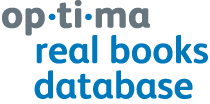The Theory
Optima programmes are underpinned theoretically by instructional psychology, a relatively little known area within the field of psychology. Its unique starting point in understanding how to teach effectively is a detailed analysis of the learning environment rather than an assessment of children’s cognition or teachers’ strengths and weaknesses.

The Theory of Optimal Instruction
The Theory of Optimal Instruction provides a theoretical framework for determining what to teach. It states that there is an optimal amount of information to learn that will lead to maximum generalisation. Thus, when teaching reading, writing, maths and language we have identified the most useful, generalisable information to present to children so that teaching is maximally effective. ‘Optimal’ learning involves the student remembering what is most useful because it occurs frequently and is therefore, seen to be important and forgetting what occurs less frequently. Pareto’s Law provides the basis for identifying the optimal amount of information to teach.

Pareto’s Law
Pareto’s Law (also known as the 80/20 principle, Koch, 1998) provides a conceptual framework for identifying the optimal level of information to teach and proposes that ‘a minority of causes, inputs or effort usually leads to the majority of the results, outputs or rewards.’ The aim therefore, when teaching reading is to design programmes that enable students to learn (or adapt to) the structures in the books that they encounter so that they learn the words and sounds that occur most frequently. When teaching mathematics the aim is to identify a small number of highly generalisable strategies that will enable children to balance a range of equations of increasing difficulty and to apply their mathematical knowledge to a variety of problems. Pareto’s Law has now been applied to all the Optima programmes







